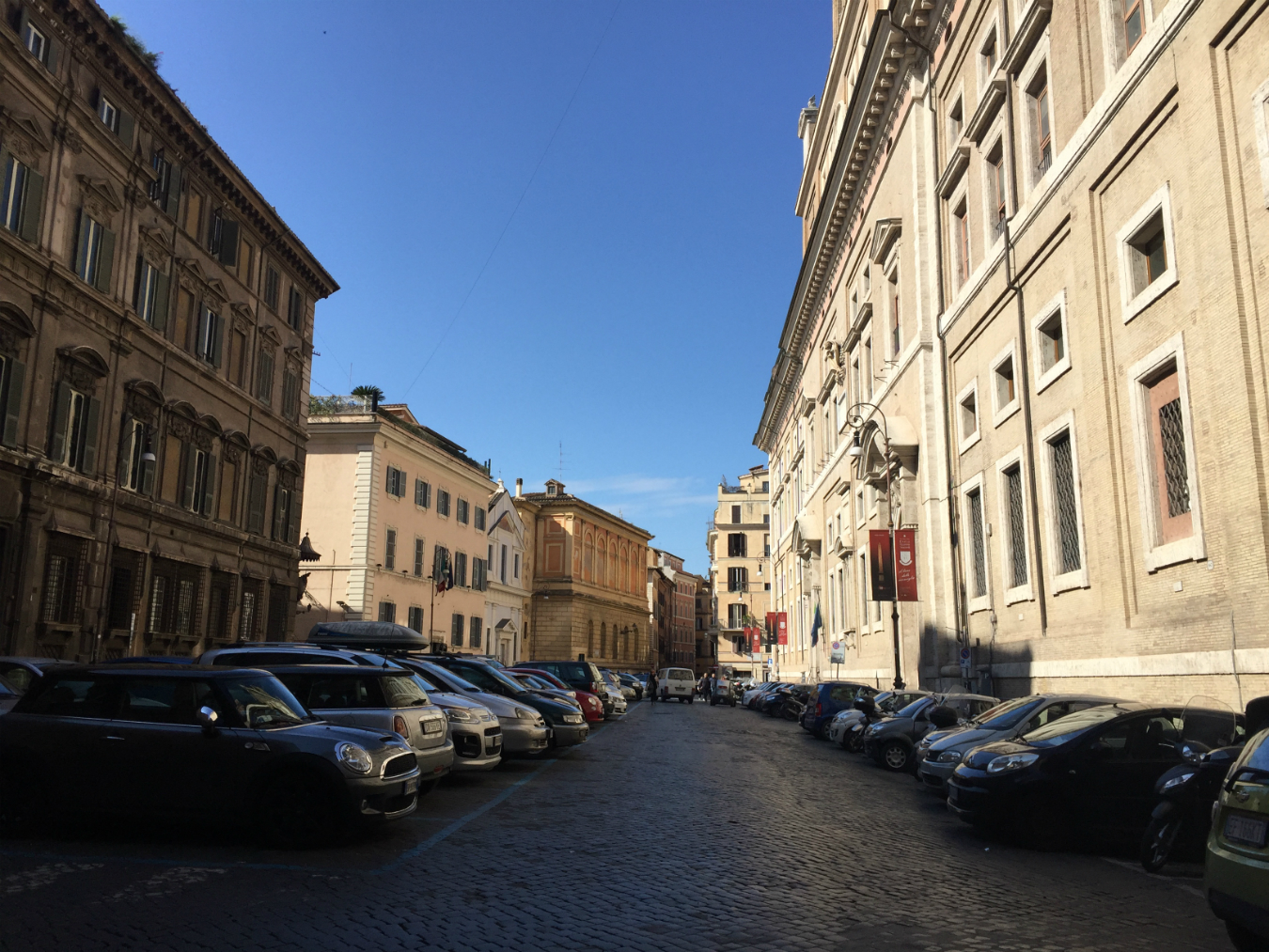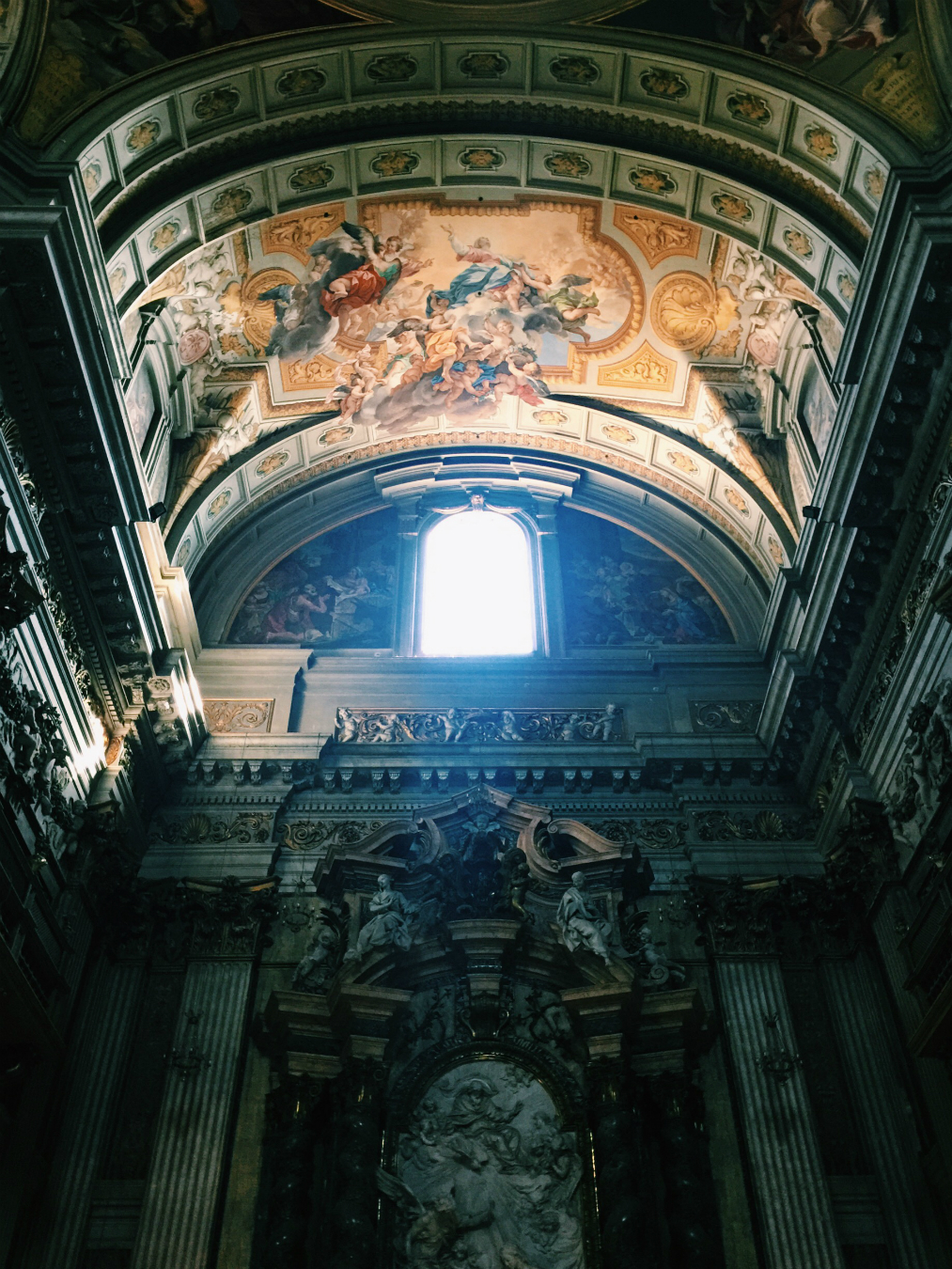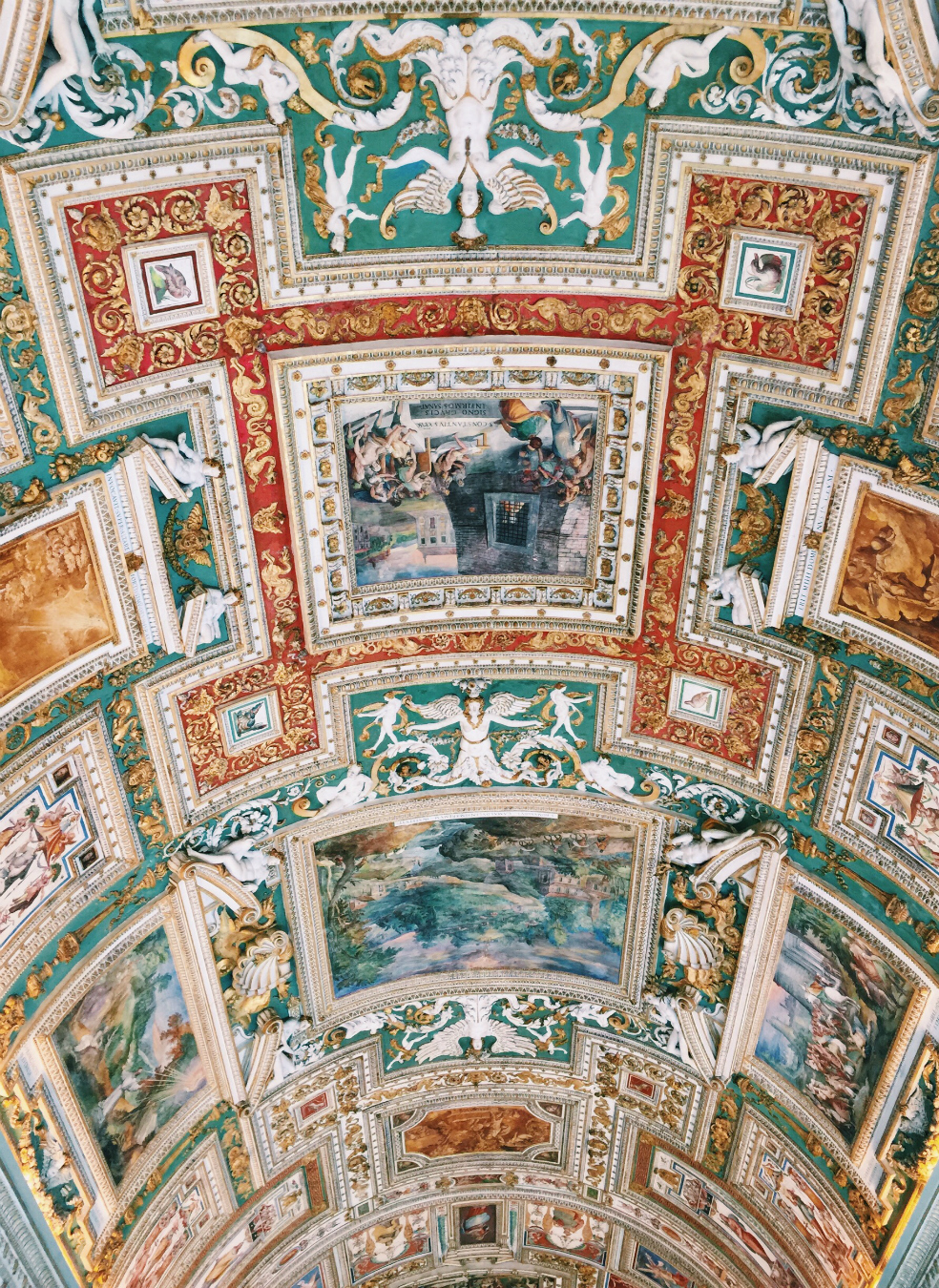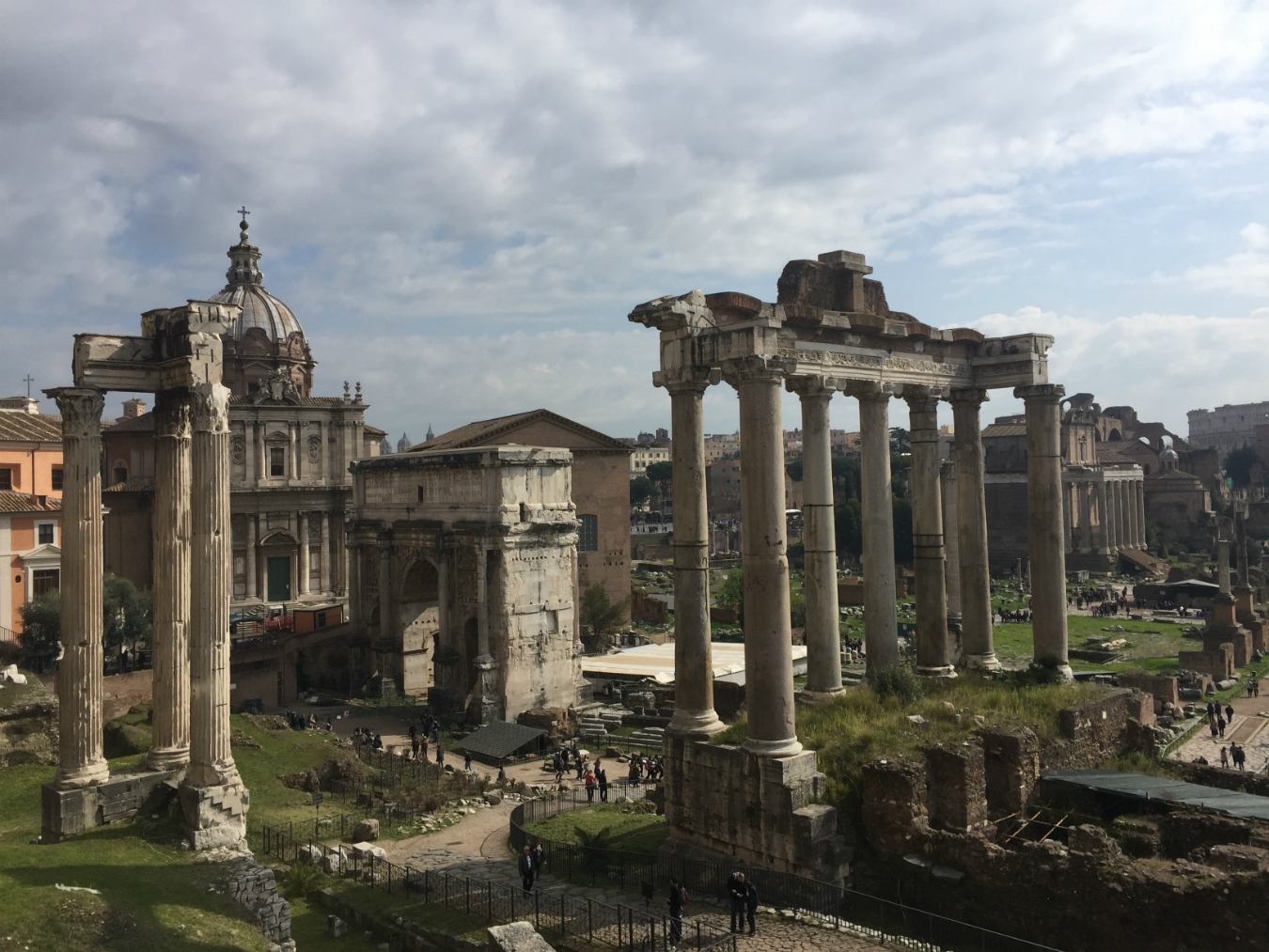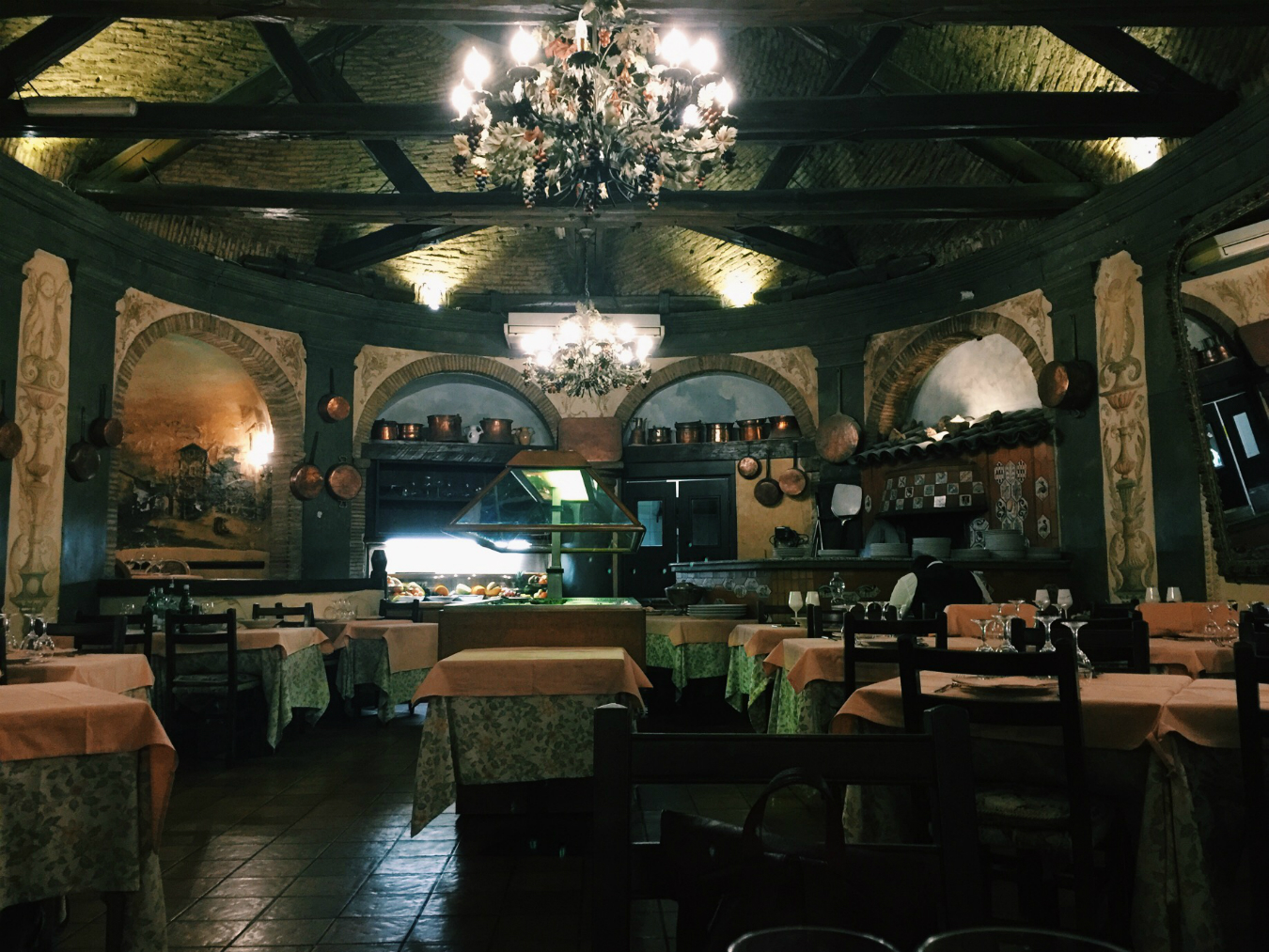Wake up; drink an espresso from a tiny cup. That’s what you get when you order coffee in Rome, and you feel bad for ever drinking it any other way again. Step outside. Because it’s still early, the light is sharp and shadows fall abruptly. To the left, stone ruins that seem to have been turned into a movie theatre; to the right, a church guarded by muscular marble horses. Walk. Rome is seen best without a plan. There are the obvious sights—the Pantheon, the Colosseum, the street-side stalls selling calendars of the Vatican’s most handsome priests—but the city delivers so many random acts of charm that wandering freely is rewarded. What seems like an unassuming door may lead into a cathedral outfitted with thick, lush marble and gold leaf. Stick your head into a cafe for a whiff of fresh bread in the oven. Even when it’s slightly burnt it still smells sweet. It’s almost too much.
Stop for lunch in a piazza, wipe the plate clean with bread, and lick the chocolate out of a pastry. Now that it’s afternoon, sunlight is making its way around the city in a peculiar way, as if somehow the rays are longer and more cunning here than in other places, bouncing off of white stone buildings, turning corners, and illuminating objects all the way down the street. The city is an open-air museum: elaborate carvings and frescoes adorn façades; arches and columns that were erected thousands of years ago act as still-standing records of the Italian Renaissance’s heartbeat. Muscled bodies, drapery, and animals are common in statuary. Rome is one way to see what a city could be like if the arts were truly treasured and funded accordingly: as Caesar said, it is better to create than learn—creating is the essence of life.
For those of us who don’t live among historical and artistic splendour, it’s difficult to imagine what life is like for modern-day Romans in a city where beauty is so ubiquitous.
The art in Rome is grand, elaborate, over the top, beautiful, opulent, transcendent. Be sure not to miss the Vatican Museum, as it provides an important representation of what the Roman people and government valued: love, devotion, intellectualism, art, and the imperial power of the empire. The Pinacoteca, or Picture Gallery, inside houses some of the most incredible feats of Italian religious art. Further in, past the Galleria delle Carte Geografiche, or Hall of Maps, which is a marvel itself, is the Sistine Chapel—as jaw-droppingly magnificent as its reputation suggests. Commissioned by Pope Julius II in the early 1500s, Michelangelo’s feat of storytelling, anatomy, and illusion is a primary example of what is possible when inspired by something divine. Guards regularly hush the crowds inside, but most people are speechless anyway.
Soon it is time to eat again. One can’t talk about Italy without mentioning the food, which is the antithesis of its architecture. But simplicity does not forfeit flavour. So there’s soft mozzarella cheese, sourdough bread, and tomatoes so sweet you could skip dessert, but why would you. There’s the antipasti, the olive oil drizzled on everything including cake, and, of course, the pizza. Share a bottle of wine with a stranger. Or two.
For those of us who don’t live among historical and artistic splendour, it’s difficult to imagine what life is like for modern-day Romans in a city where beauty is so ubiquitous. Yet four million people do live, work, dine, drink, and dance in what is widely regarded as the birthplace of Western civilization. Modern and old, past and present continue to gracefully coexist. A woman walks by the Fontana di Trevi carrying a baby without noticing the hundreds of tourists who marvel at the monument, vying for photographs. Someone throwing her coin to make a wish nearly falls in. A flock of birds rises, startled, and the sun begins to set.
Wanderlust? Keep reading.

